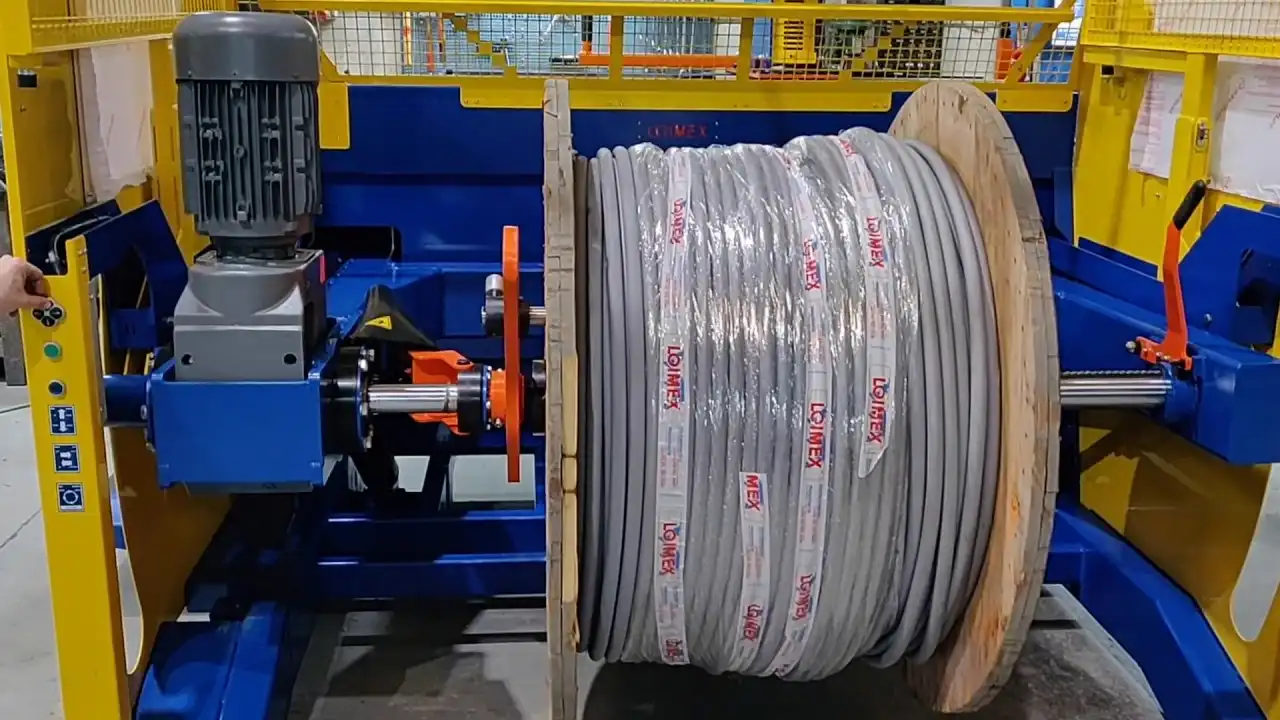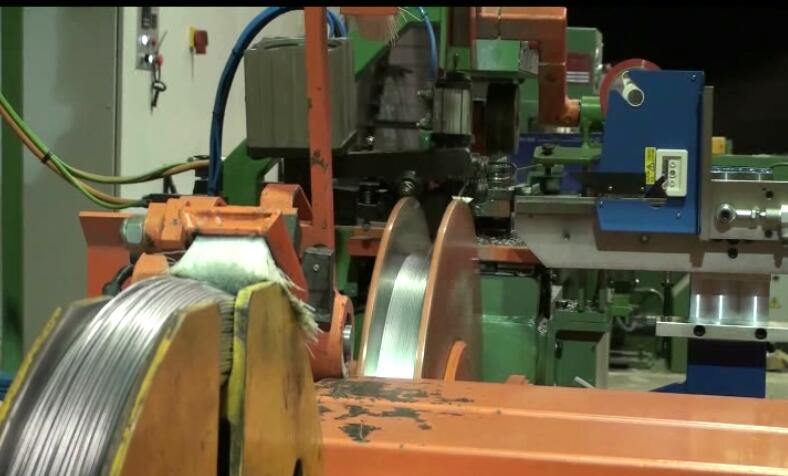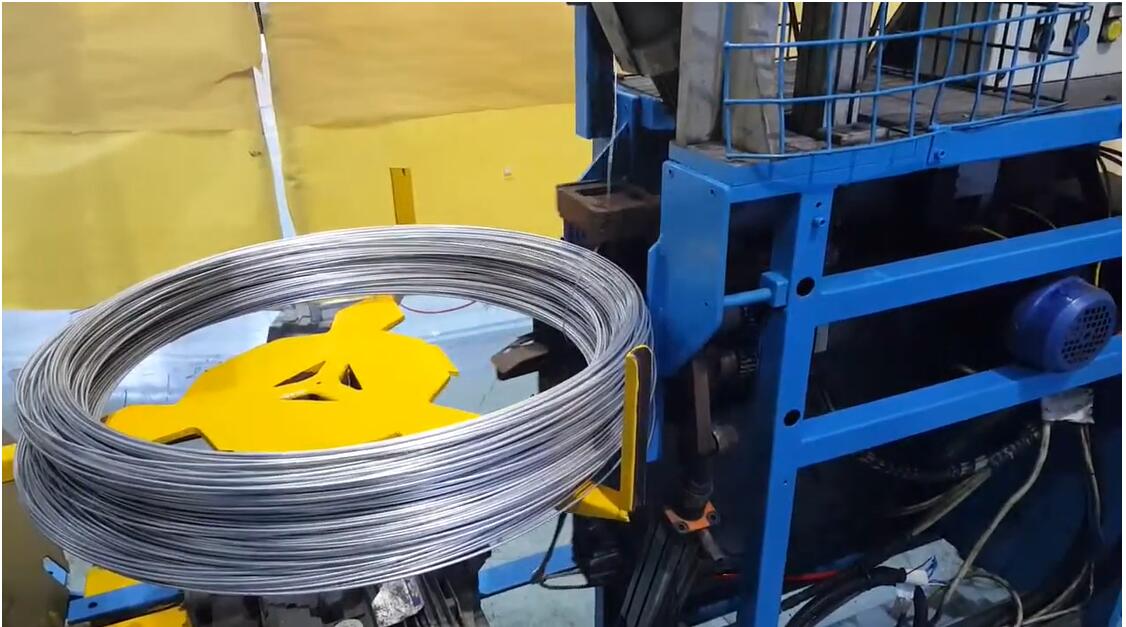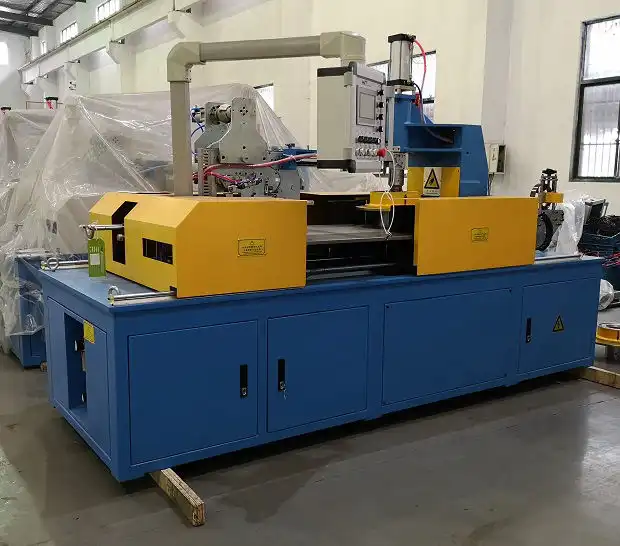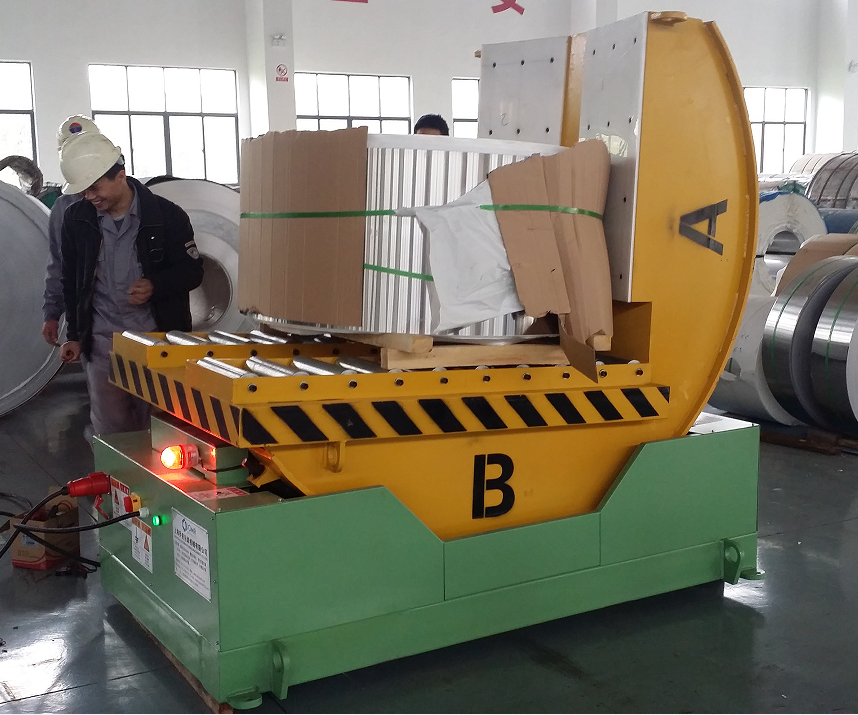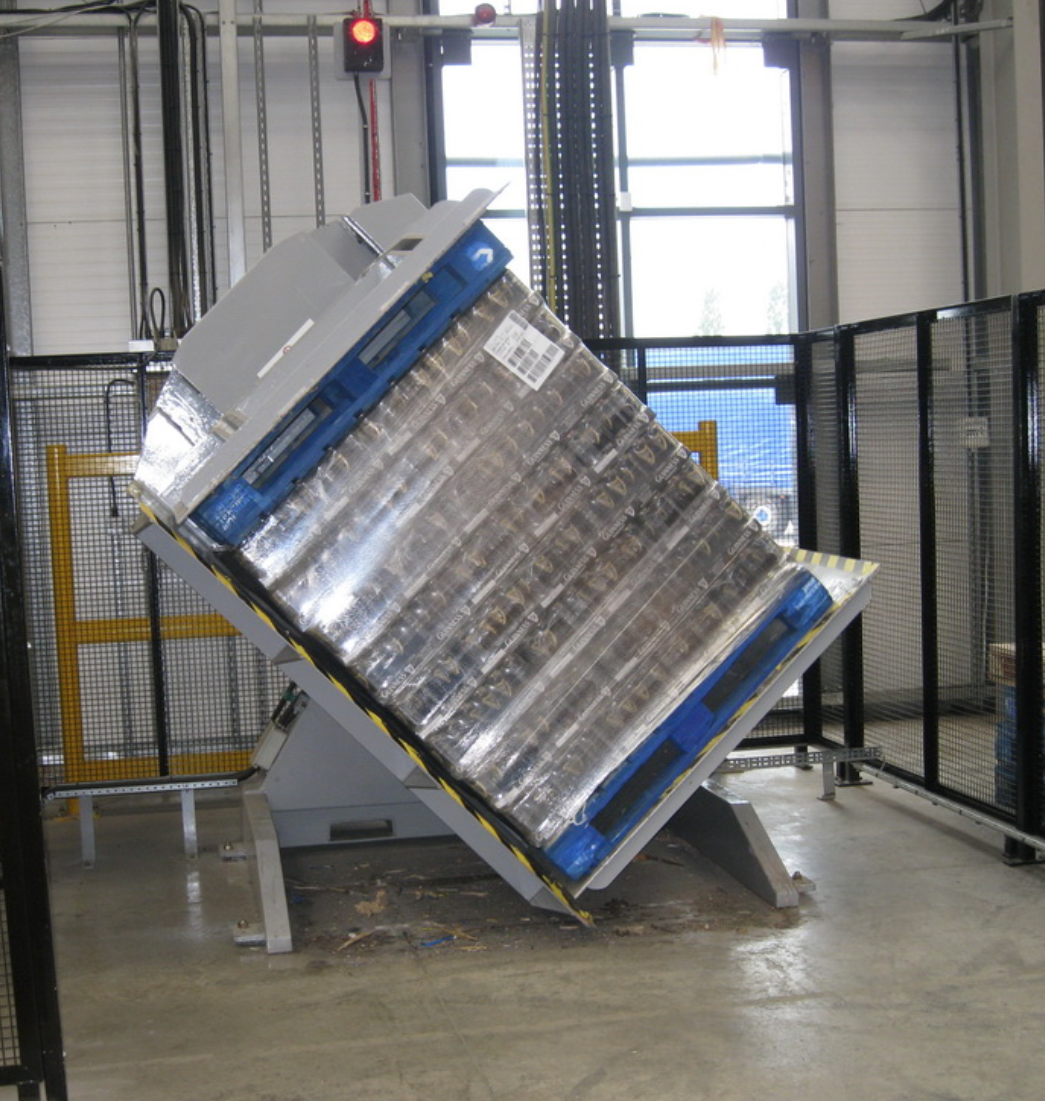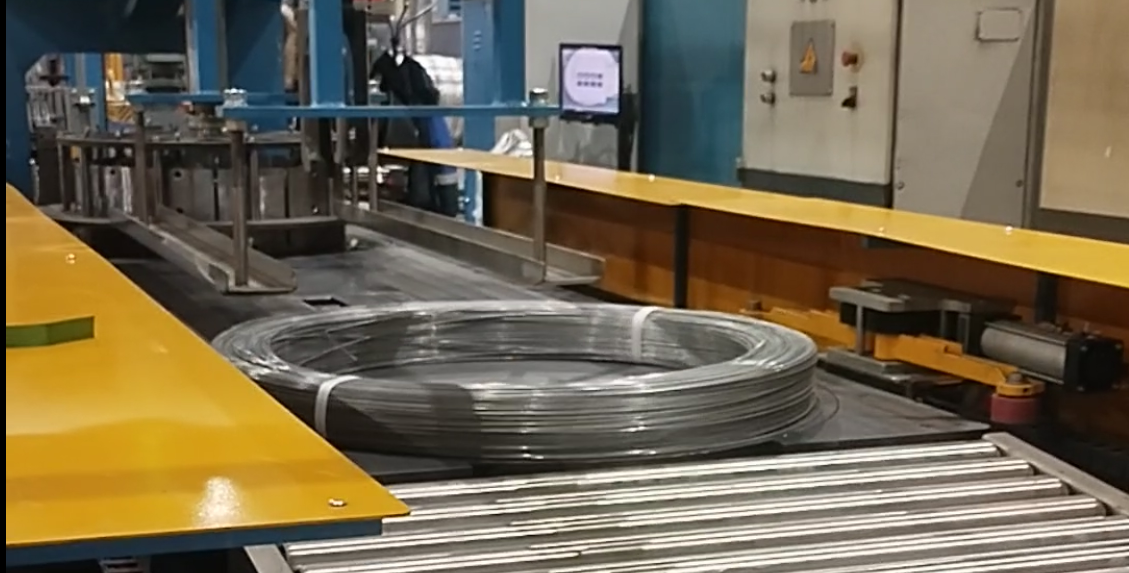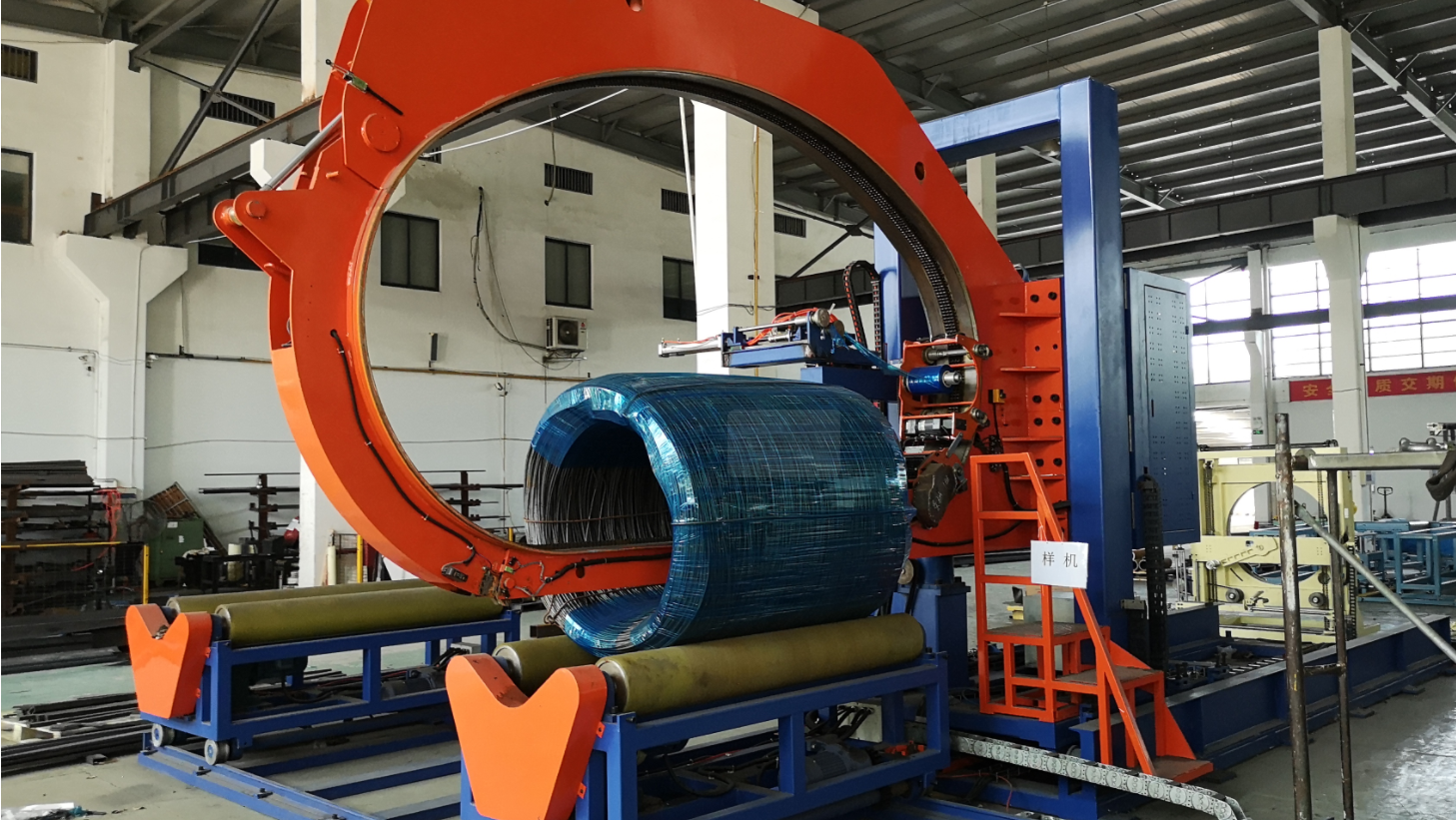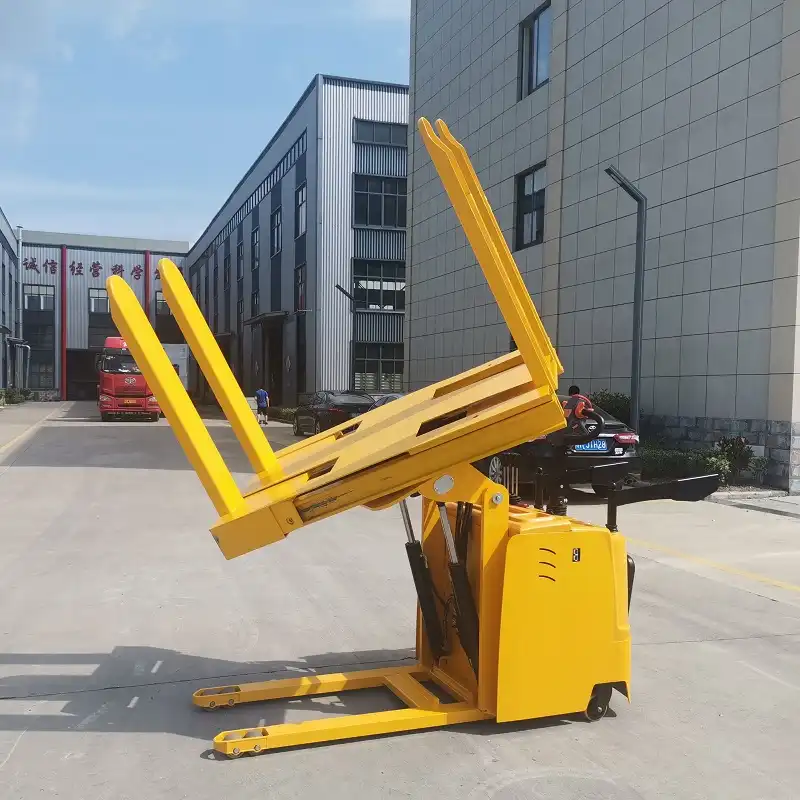Maintenance Considerations When Buying a Mold Flipper
Investing in a mold flipper is a significant step towards enhancing operational efficiency and safety. However, overlooking crucial maintenance considerations during the purchasing process can lead to unforeseen long-term costs and operational disruptions. Thinking ahead about upkeep is paramount for a wise investment.
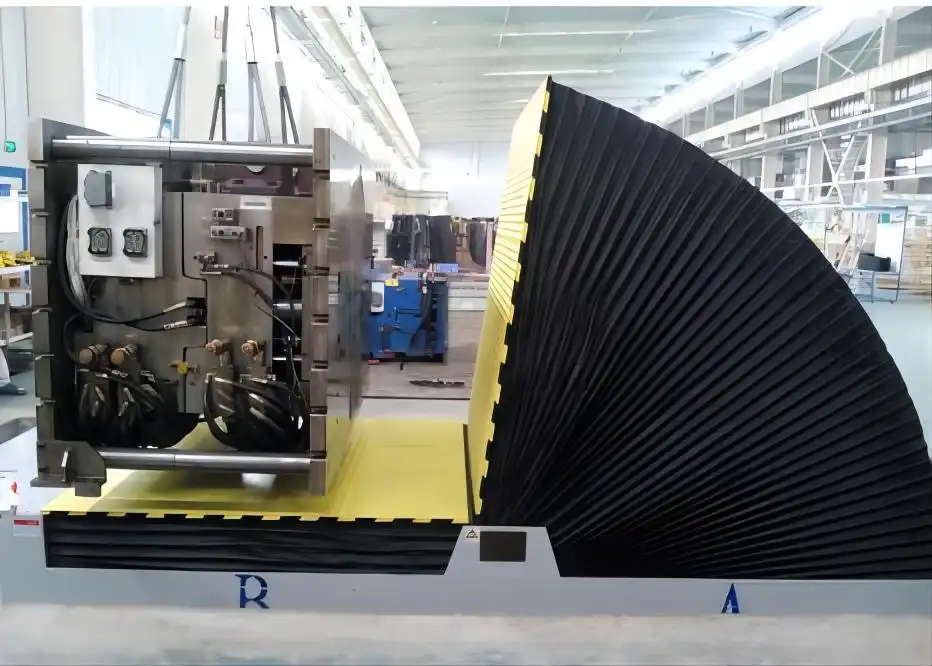
When buying a mold flipper, key maintenance considerations include scrutinizing build quality, accessibility of components for repair, availability of spare parts, clarity of maintenance documentation, and the manufacturer’s post-sales support and warranty. These factors directly impact long-term operational costs, downtime, and the overall lifecycle value of the equipment, ensuring reliability and ease of upkeep for years to come, safeguarding your investment effectively.
Choosing a mold flipper is not merely about its initial cost or immediate capabilities; it’s about selecting a long-term partner in your production line. The design choices, materials used, and manufacturer support structures all play pivotal roles in how easy or difficult, cheap or expensive, the machine will be to maintain throughout its operational life. Neglecting these aspects can turn a seemingly good investment into a persistent operational headache. This guide delves into the critical maintenance considerations you must evaluate before finalizing your purchase, ensuring your new mold flipper is an asset, not a liability.
1. Understanding Long-Term Maintenance Implications During Purchase
Evaluating a mold flipper extends beyond its immediate functionality. Prospective buyers must deeply consider the long-term maintenance implications inherent in the machine’s design and construction. This foresight ensures the selected equipment will operate reliably and cost-effectively throughout its lifespan, minimizing unexpected repair bills and production stoppages.
Key pre-purchase maintenance considerations involve a thorough assessment of the mold flipper’s build quality, focusing on robust construction and high-grade materials that promise durability. Component accessibility is crucial; easily reachable parts simplify repairs and routine checks, reducing labor time and costs. Comprehensive and clear maintenance documentation, including detailed manuals and schematics, is essential for in-house teams. Furthermore, the ready availability of genuine spare parts and the responsiveness of manufacturer support can drastically cut downtime. Evaluating the warranty terms and the scope of post-sales service offered by the vendor also provides a safety net against premature failures and complex maintenance issues. Prioritizing these factors ensures the chosen mold flipper will be a reliable and easily maintainable asset for your operations.
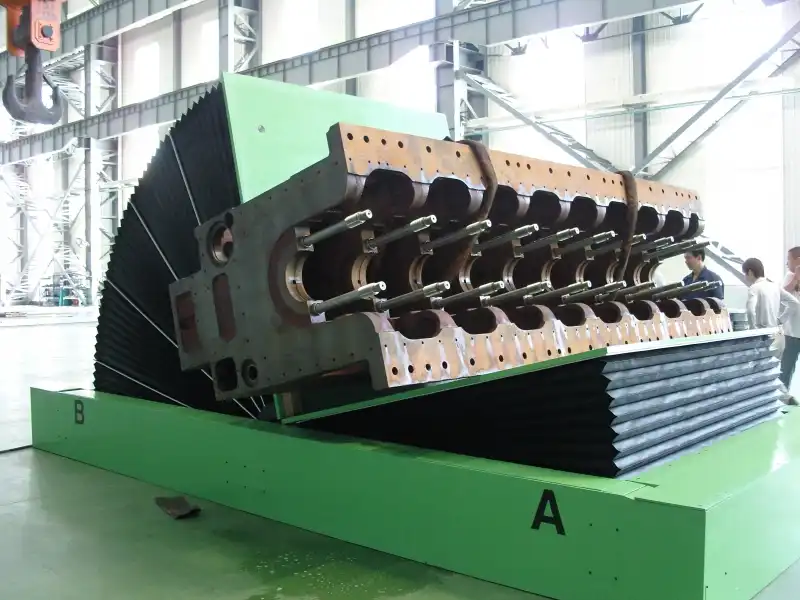
Deconstructing Maintenance Costs: Beyond the Sticker Price
The initial purchase price of a mold flipper is just one component of its total cost of ownership (TCO). Maintenance expenditures, often underestimated, can significantly inflate this TCO over the machine’s lifecycle. A prudent buyer looks beyond the upfront investment and scrutinizes factors that will dictate future maintenance burdens.
Preventative vs. Corrective Maintenance:
A well-designed mold flipper facilitates proactive preventative maintenance (PM). Features like easily accessible lubrication points, transparent inspection windows for key components, and simple adjustment mechanisms encourage regular upkeep. This, in turn, minimizes the likelihood of unexpected breakdowns and the higher costs associated with corrective maintenance. Conversely, machines with poorly accessible components or those requiring specialized tools for basic checks often see PM schedules neglected, leading to premature wear and tear. Industry data suggests that a robust PM program can reduce overall maintenance costs by 12% to 18% and cut unscheduled downtime by 35% to 45%.
Component Lifespan and Quality:
The quality of individual components—such as bearings, motors, hydraulic cylinders, electrical contacts, and control systems—directly correlates with their lifespan and, consequently, maintenance frequency. Opting for a flipper built with components from reputable manufacturers, even if it means a slightly higher initial cost, often translates to longer service intervals and fewer replacements. For example, high-quality sealed bearings might last significantly longer in a demanding industrial environment than cheaper, unsealed alternatives, saving on both parts and labor. Research papers on industrial equipment reliability consistently highlight material selection and component engineering as primary drivers of mean time between failures (MTBF).
Labor Costs for Maintenance:
The ease with which maintenance tasks can be performed directly impacts labor costs. A mold flipper designed with maintenance in mind will feature quick-access panels, modular components that can be easily swapped out, and clear labeling. If routine tasks require extensive disassembly or specialized skills, labor costs will escalate. Consider the average hourly rate of your maintenance technicians; even an extra hour spent per PM task due to poor design can add up significantly over a year.
Downtime Costs:
Perhaps the most significant, yet often hidden, cost associated with poor maintainability is downtime. When a mold flipper is out of service, the entire production line it supports may halt. The cost of lost production can dwarf the actual repair expenses. A machine that is quick to diagnose and repair, with readily available spares, minimizes this impact. Features like built-in diagnostics in the control system can drastically reduce troubleshooting time.
Table: Hypothetical Total Cost of Ownership (TCO) Comparison Over 5 Years
| Feature | Mold Flipper A (Lower Initial Cost, Basic Design) | Mold Flipper B (Higher Initial Cost, Maintenance-Focused Design) | Mold Flipper C (Premium, Advanced Diagnostics & Support) |
|---|---|---|---|
| Initial Purchase Price | $30,000 | $40,000 | $55,000 |
| Estimated Annual PM Labor | $1,200 (10 hrs/month @ $10/hr) | $600 (5 hrs/month @ $10/hr) | $480 (4 hrs/month @ $10/hr) |
| Estimated Annual Spare Parts | $1,500 | $800 | $500 |
| Estimated Corrective Maint. Cost | $2,500 (2 major incidents/year) | $1,000 (1 minor incident/year) | $500 (rare minor incidents) |
| Estimated Annual Downtime Cost | $10,000 (40 hrs downtime) | $2,500 (10 hrs downtime) | $1,250 (5 hrs downtime) |
| Total Maintenance (5 Years) | $26,000 | $9,500 | $6,150 |
| Total TCO (5 Years) | $56,000 | $49,500 | $61,150 |
Note: Labor and downtime costs are illustrative and vary significantly by operation.
This simplified comparison highlights how a mold flipper with a higher initial price but superior design for maintainability (Mold Flipper B) can result in a lower TCO. Mold Flipper C, with advanced features, might offer the lowest maintenance costs but its higher initial price point needs to be justified by the criticality of uptime and potential savings from advanced diagnostics. A thorough analysis, factoring in your specific operational parameters, is crucial.
2. Critical Maintenance Features to Scrutinize
When inspecting a potential mold flipper, certain design features directly influence its ease of maintenance and long-term reliability. Identifying these critical maintenance-friendly attributes before purchase can save considerable time, effort, and expense down the line, ensuring smoother operations and extended equipment life.
Crucial maintenance features to scrutinize include centralized and easily accessible lubrication systems, clear and intuitive diagnostic indicators on control panels, standardization of common wear parts like fasteners and bearings, and ample physical access to critical components such as motors, gearboxes, and hydraulic systems. Robust, well-protected wiring and hosing also reduce failure points. These elements collectively simplify routine upkeep and expedite repairs.
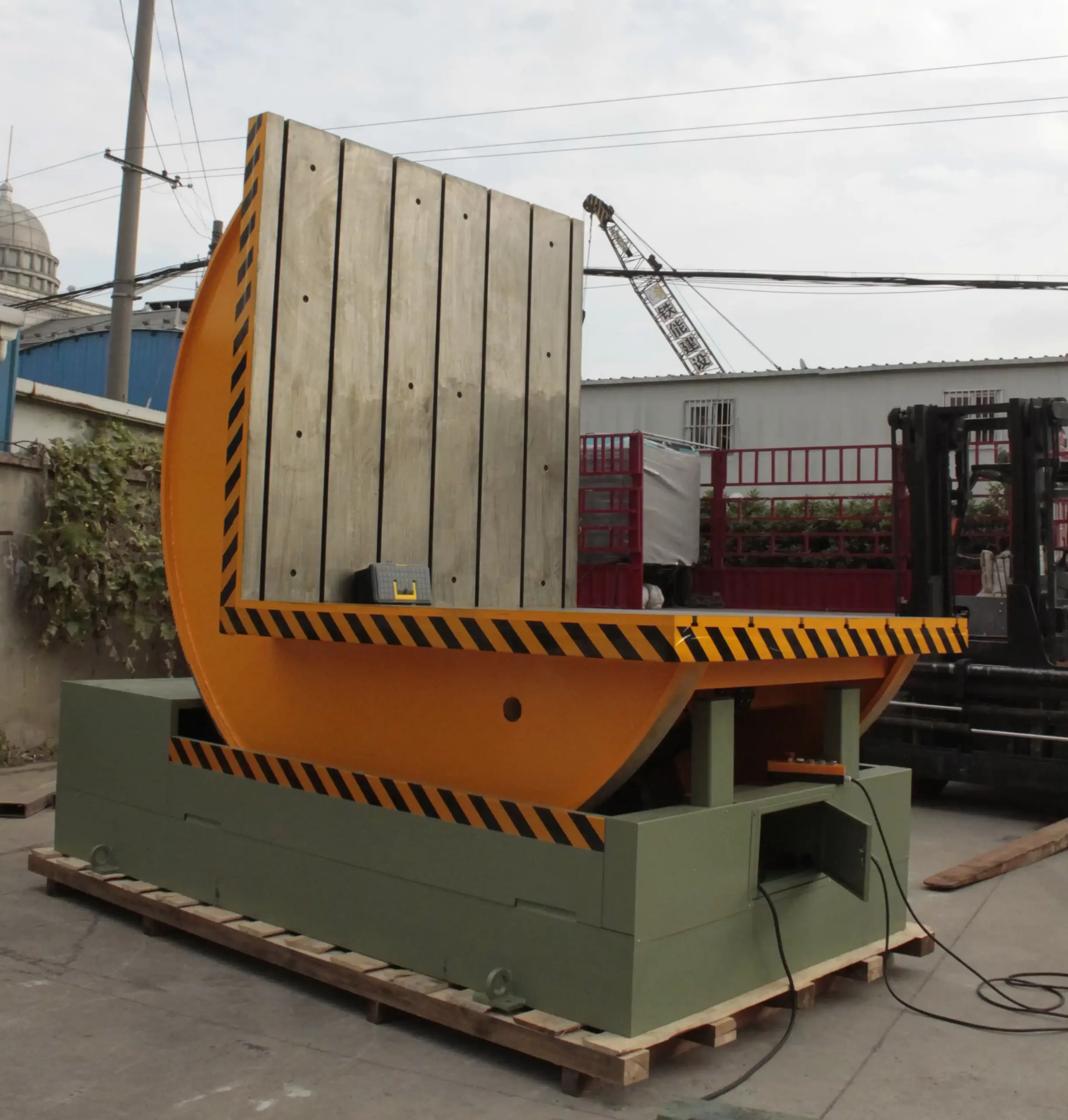
Deep Dive: Component Selection and Its Maintenance Impact
The choice of specific components within a mold flipper, from its drive system to its smallest sensor, profoundly affects its maintenance profile. Understanding these nuances during the selection process is key to minimizing future upkeep challenges and ensuring sustained performance.
Drive System Maintenance (Hydraulic vs. Electric):
Mold flippers typically utilize either hydraulic or electric drive systems, each presenting distinct maintenance considerations.
-
Hydraulic Systems:
- Pros: Known for high power density, capable of handling extremely heavy loads, and providing smooth, robust motion. They are often resilient to harsh environments.
- Maintenance Cons: Hydraulic systems involve fluids, hoses, pumps, valves, and cylinders. Regular checks for leaks are paramount, as hydraulic fluid spills can be a safety hazard and costly to clean. Fluid levels, filter conditions, and oil quality (requiring periodic analysis and changes) are ongoing maintenance tasks. Hoses can degrade over time and require replacement. Seals within cylinders and valves are also wear items. While robust, troubleshooting can sometimes be complex, requiring specialized knowledge of hydraulic schematics.
- Considerations for Buyers: Look for systems with high-quality hoses and fittings, easily accessible filters, clear fluid level indicators, and well-organized hydraulic manifolds that simplify troubleshooting. Pressure test points are also beneficial.
-
Electric Systems:
- Pros: Generally cleaner (no oil), quieter, and often more energy-efficient. Modern electric drives with servo motors or variable frequency drives (VFDs) offer precise control over speed and positioning. They typically have fewer components than hydraulic systems.
- Maintenance Cons: Maintenance often revolves around electric motors, gearboxes, and control electronics (drives, PLCs). Motor bearings may require periodic lubrication or replacement. Gearboxes will need oil checks and changes. Electrical connections should be inspected for tightness and corrosion. Complex electronic components, while reliable, can be costly to replace if they fail and may require specialized technicians for diagnosis. Power quality issues can also affect the longevity of electronic components.
- Considerations for Buyers: Opt for motors and gearboxes from reputable brands with good local support. Ensure control cabinets are well-sealed against dust and moisture (IP rating). Inquire about the availability and cost of replacement electronic modules. Systems with built-in diagnostics for the drive controller are a significant plus.
Control System Upkeep:
The sophistication of the control system (e.g., simple relay logic vs. Programmable Logic Controller – PLC with Human-Machine Interface – HMI) impacts maintenance.
- PLCs and HMIs: Offer greater flexibility and diagnostic capabilities. Error codes displayed on an HMI can significantly speed up troubleshooting. However, they require programming knowledge for modifications or advanced diagnostics. Ensure the manufacturer provides comprehensive documentation, including PLC ladder logic (if accessible) and HMI screen files. Battery backup for PLC memory is a small but critical maintenance check. Software updates or compatibility issues can also arise over the machine’s lifespan.
- Sensors (Limit Switches, Proximity Sensors, Encoders): These are critical for safe and accurate operation. Their physical mounting should be robust to prevent misalignment. Wiring should be protected. Regular checks for functionality and cleanliness are needed. Standardized sensor types can simplify spare parts inventory.
Bearing and Wear Part Longevity:
All moving parts eventually wear. The quality and type of bearings, bushings, wear pads, and chains/sprockets used are critical.
- Bearings: Sealed-for-life bearings reduce lubrication needs but will eventually require replacement. Greasable bearings need regular lubrication, but if done correctly, can have a very long life. The load rating and suitability for the application are paramount. Look for brands known for quality.
- Wear Pads/Strips: On sliding surfaces, ensure wear materials are durable and easily replaceable. Some designs allow for adjustment to compensate for wear before replacement is needed.
- Chains/Belts: If used in the drive mechanism, proper tensioning, lubrication (for chains), and alignment are crucial. Inspect for wear and replace proactively to avoid catastrophic failure.
By asking detailed questions about these components and their expected maintenance schedules before purchasing, buyers can make a more informed decision, selecting a mold flipper that aligns with their maintenance capabilities and operational uptime requirements.
3. Post-Purchase Maintenance: Planning for Longevity
Acquiring a mold flipper is the first step; ensuring its long-term operational health hinges on a well-structured post-purchase maintenance strategy. Proactive planning, starting from day one, is essential to maximize the machine’s lifespan, maintain performance, and prevent costly, unscheduled downtime in your facility.
Effective post-purchase maintenance involves developing a comprehensive schedule for routine inspections, lubrication, and component checks based on manufacturer recommendations and operational intensity. Crucially, training operators and maintenance staff on proper procedures and safety protocols is paramount. Meticulous record-keeping of all maintenance activities, repairs, and parts replaced aids in trend analysis and future troubleshooting, ensuring optimal performance.

Establishing a Robust Maintenance Program
A robust maintenance program is the cornerstone of ensuring your mold flipper operates reliably and efficiently throughout its intended service life. This program should be more than just a list of tasks; it needs to be an integrated system encompassing regular inspections, scheduled upkeep, diligent record-keeping, and continuous improvement based on operational feedback.
1. Routine Inspections and Preventative Maintenance (PM) Schedule:
The manufacturer’s manual is the primary resource for developing a PM schedule. This schedule should detail daily, weekly, monthly, quarterly, and annual checks and tasks.
- Daily Checks (Operator-led): Visual inspection for any obvious damage, leaks (hydraulic systems), unusual noises, loose fasteners, and correct functioning of emergency stops and safety interlocks.
- Weekly Checks: More detailed inspection of critical wear parts (e.g., chains, belts, wear pads), lubrication points, hydraulic fluid levels, and sensor functionality. Check for debris accumulation.
- Monthly/Quarterly Checks: Thorough cleaning, lubrication of all specified points, inspection of electrical connections in control cabinets, tightening of bolts, checking hydraulic pressures and filter conditions. For electric systems, inspect motor brushes (if applicable) and cooling fans.
- Annual Checks/Overhauls: Comprehensive inspection by trained technicians. This may include hydraulic oil analysis and replacement, detailed inspection of gearboxes, motor performance testing, calibration of sensors, and replacement of components nearing the end of their service life based on manufacturer guidelines or observed wear.
2. Lubrication Management:
Proper lubrication is vital. The maintenance program must specify:
- Lubricant Type: Using the correct type of grease or oil as specified by the manufacturer is critical.
- Frequency: Adhering to the recommended lubrication intervals.
- Quantity: Applying the correct amount—over-lubrication can be as detrimental as under-lubrication.
- Points: Clearly identifying all lubrication points (often with decals on the machine).
3. Spare Parts Inventory Management:
Identify critical spare parts based on manufacturer recommendations and your own risk assessment. Holding a small inventory of essential wear items or components with longer lead times can drastically reduce downtime.
- Critical Spares: Items like specific sensors, fuses, contactors, seals for hydraulic systems, or a specific bearing.
- Supplier Relationships: Establish good relationships with suppliers for quick procurement of non-stocked parts.
- Inventory Tracking: Maintain a system to track spare parts usage and reorder levels.
4. Operator and Maintenance Staff Training:
Well-trained personnel are essential for effective maintenance and safe operation.
- Operator Training: Should cover daily checks, basic troubleshooting, safe operating procedures, and recognizing signs of impending problems.
- Maintenance Staff Training: In-depth training on PM procedures, troubleshooting techniques (mechanical, electrical, hydraulic), safety protocols during maintenance (e.g., Lockout/Tagout – LOTO), and proper use of diagnostic tools. Manufacturer-led training can be invaluable.
5. Record Keeping and Analysis:
Maintaining detailed records of all maintenance activities is crucial for:
- Tracking History: Understanding the service history of the machine and individual components.
- Identifying Trends: Spotting recurring problems or components that fail prematurely, which can indicate a design issue, an operational issue, or a need to adjust the PM schedule.
- Compliance: Providing documentation for safety audits or warranty claims.
- Budgeting: Accurately forecasting future maintenance costs.
A computerized maintenance management system (CMMS) can greatly simplify record-keeping and analysis.
Table: Sample Mold Flipper Maintenance Checklist Snippet
| Frequency | Task Category | Specific Check/Action | Responsibility | Sign-off | Notes/Issues Found |
|---|---|---|---|---|---|
| Daily | Safety | Verify E-stop buttons functional | Operator | ||
| Daily | Visual Inspection | Check for fluid leaks (hydraulic models) | Operator | ||
| Daily | Operation | Listen for unusual noises during operation | Operator | ||
| Weekly | Mechanical | Inspect drive chains/belts for tension and wear | Maint. Tech | ||
| Weekly | Lubrication | Check grease levels at designated points (if applicable) | Maint. Tech | ||
| Monthly | Electrical | Inspect control panel for loose wires, cleanliness | Maint. Tech | ||
| Monthly | Hydraulic | Check hydraulic oil level and filter indicator | Maint. Tech | ||
| Quarterly | Cleaning | Thoroughly clean machine, removing debris | Maint. Tech | ||
| Annually | Calibration | Verify sensor calibration and positioning accuracy | Specialist | Re-calibrated sensor X | |
| Annually | Hydraulic | Sample hydraulic oil for analysis; change if necessary | Specialist | Oil changed on [Date] |
By implementing such a structured program, businesses can transition from a reactive ("fix it when it breaks") approach to a proactive maintenance culture, significantly enhancing the reliability and longevity of their mold flipper investment.
4. The Role of Manufacturer Support and Warranty in Maintenance
When investing in a mold flipper, the quality of the machine itself is paramount, but the manufacturer’s post-sales support and warranty terms are equally critical for long-term maintenance success. These elements provide a safety net and crucial resources throughout the equipment’s operational life.
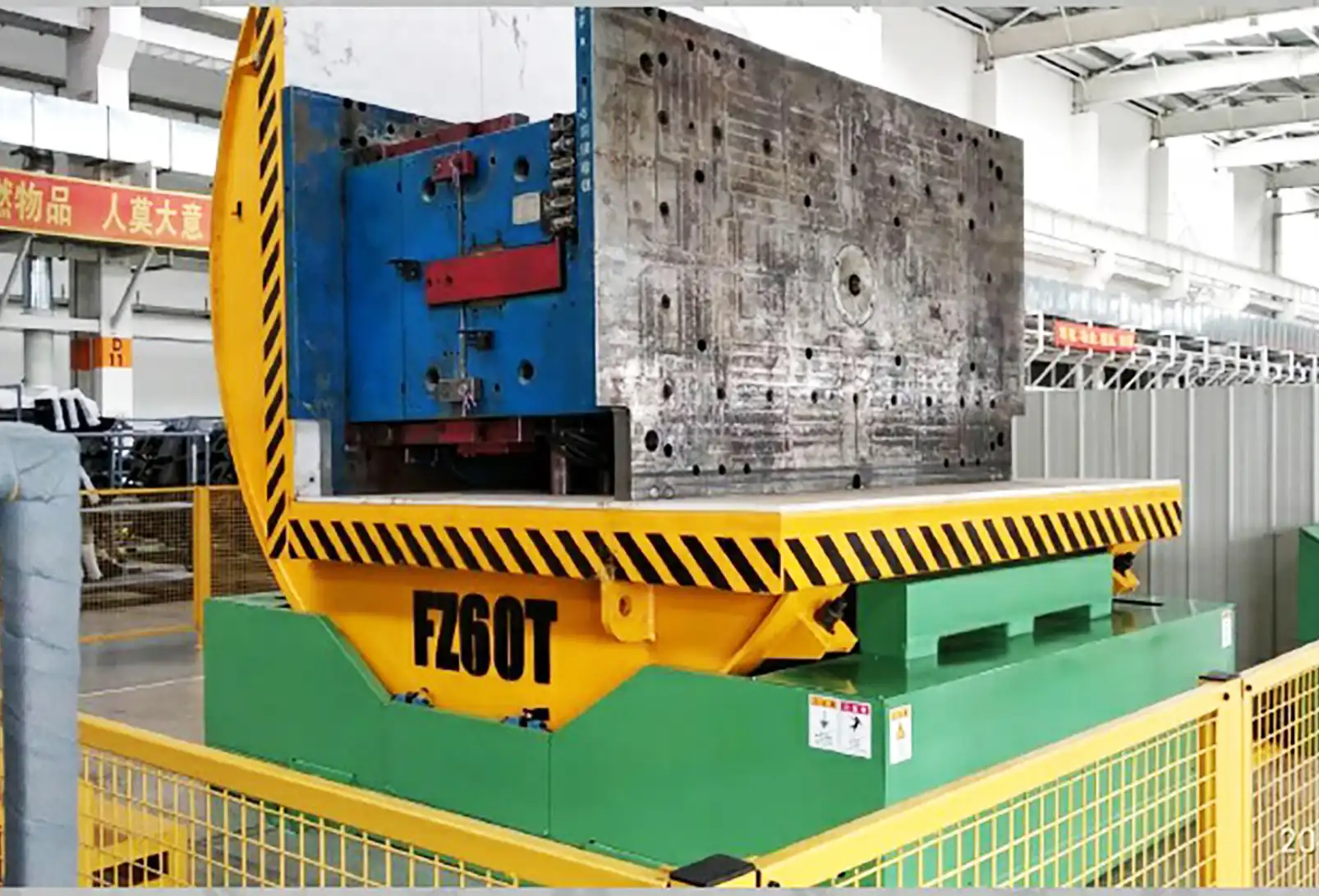
Robust manufacturer support, clear warranty terms, and readily available technical assistance significantly reduce long-term maintenance burdens and costs, ensuring operational continuity. A comprehensive warranty protects against premature component failure, while accessible expertise and prompt spare parts delivery minimize downtime and simplify complex repairs, ultimately safeguarding your investment and operational efficiency. These factors are vital considerations when buying a mold flipper.
A strong partnership with the mold flipper manufacturer can be invaluable when maintenance issues arise. Before purchasing, thoroughly investigate the following aspects:
Warranty Coverage:
- Duration: How long is the warranty period (e.g., 1 year, 2 years)?
- Scope: What parts and labor are covered? Are there exclusions (e.g., normal wear parts, damage due to misuse)? Is travel time for technicians covered? Understanding these details prevents unexpected costs. For instance, a warranty might cover a failed PLC but not the labor to install and reprogram it unless explicitly stated.
- Process: What is the procedure for making a warranty claim? How quickly does the manufacturer respond to claims? Clarity here is essential to avoid delays.
Technical Support Availability:
- Access Channels: Can you reach technical support via phone, email, or online portals? Is there a dedicated support line?
- Response Times: What are the guaranteed or typical response times for technical queries? For critical production equipment, rapid support is non-negotiable. Some manufacturers offer tiered support with faster responses for premium service levels.
- Expertise: Does the support team possess deep knowledge of the mechanical, electrical, and hydraulic/pneumatic aspects of their mold flippers? Can they assist with remote diagnostics? Access to experienced engineers who understand the nuances of mold flipper operation can save hours, or even days, of troubleshooting.
- Documentation Quality: Comprehensive, well-written, and easily accessible documentation (manuals, schematics, troubleshooting guides) is a form of passive support. Ensure these are provided and are up-to-date. Digital, searchable formats are increasingly standard.
Spare Parts Program:
- Availability: Does the manufacturer maintain an adequate stock of common and critical spare parts? What are the typical lead times for parts not in local stock?
- Pricing: Are spare parts reasonably priced? Some manufacturers may subsidize the initial machine cost but overprice spare parts.
- Identification: Is it easy to identify and order the correct spare parts using the machine’s serial number and parts diagrams?
- Logistics: How efficient is their parts shipping process? Can they expedite critical parts when necessary?
Training and On-Site Services:
- Initial Training: Does the manufacturer offer comprehensive operator and maintenance training upon installation? This is crucial for ensuring your team can handle routine upkeep and basic troubleshooting.
- Advanced Training: Are advanced or refresher training courses available, perhaps at the manufacturer’s facility or online?
- Field Service Technicians: Does the manufacturer have a network of skilled field service technicians who can provide on-site assistance for complex repairs or preventative maintenance services (often under a service contract)? Knowing their geographical coverage and availability is important.
A manufacturer that invests in strong post-sales support demonstrates a commitment to their product’s long-term performance and customer satisfaction. This support infrastructure acts as an extension of your own maintenance capabilities, providing expertise and resources that can be critical in minimizing downtime and controlling overall maintenance expenditure. When evaluating mold flipper suppliers, consider their support reputation and capabilities as a significant factor in your purchasing decision.
Conclusion
Selecting a mold flipper requires a forward-thinking approach, extending far beyond the initial price tag. Prioritizing maintenance considerations—from robust build quality and accessible components to comprehensive manufacturer support and clear warranty terms—is crucial for the machine’s longevity and operational efficiency. A thorough evaluation of these aspects during the procurement process will significantly reduce long-term costs, minimize unexpected downtime, and ensure the mold flipper remains a productive asset rather than a maintenance burden. Investing wisely upfront in a maintainable machine, backed by solid support, translates directly to sustained productivity and a healthier bottom line for your manufacturing operations.


